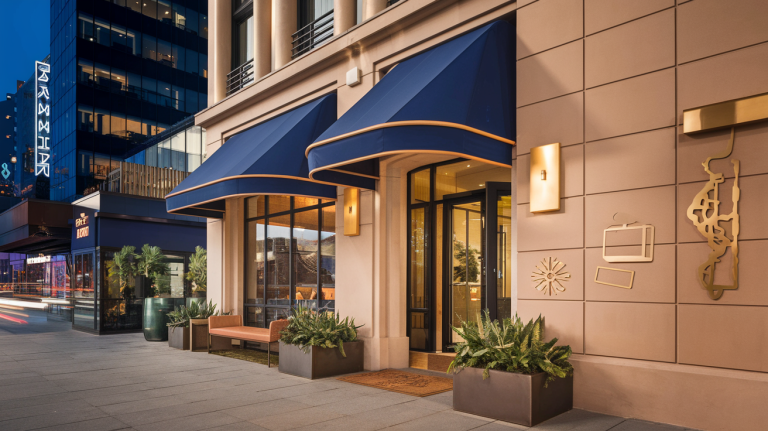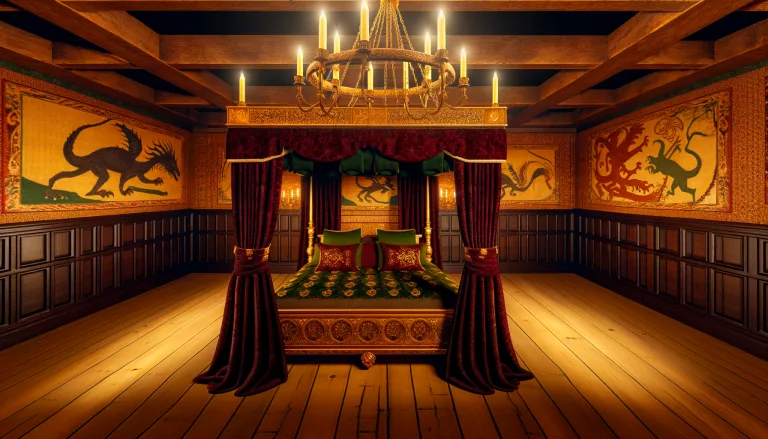Explore the Rich History and Charm of Rome
Embark on a journey to explore the rich history and undeniable charm of Rome. This vibrant city has long fascinated travelers from around the world, drawing them in with its captivating tales of the past and enchanting beauty. Whether you are a history enthusiast, a food lover, or someone seeking art and spirituality, Rome has the perfect break for you. From ancient ruins to artistic masterpieces, this city holds countless treasures waiting to be discovered. And if you’re looking for a romantic getaway or a family-friendly adventure, Rome has you covered. With its Roman Riviera breaks, you can even enjoy a combination of cultural exploration and seaside relaxation. Whatever your preference, Rome offers a range of experiences tailored to all types of travelers, inviting you to embrace the charm and beauty of the Eternal City.
The Eternal City: Understanding Rome’s Moniker
Rome, often referred to as the “Eternal City,” is a destination that has captivated travelers for centuries. This moniker encapsulates the rich history and timeless allure that the city exudes. But where did this name originate, and what does it truly symbolize? Let’s delve into the origins and symbolism behind Rome’s famous moniker.
Origin of ‘Eternal City’ Moniker
The term “Eternal City” was first coined by the ancient Roman poet Tibullus in the 1st century BCE. He used this phrase to express the immortality of Rome, emphasizing its enduring power and influence in the world. The designation resonated with the Roman Empire’s citizens, who saw their city as a timeless entity that would forever hold a significant place in history.
Symbolism Behind the Title
The moniker “Eternal City” holds deep symbolism. It represents Rome’s ability to withstand the test of time, from its ancient origins to its modern-day prominence. It conveys the idea that Rome will forever exist as a cultural, artistic, and historical masterpiece, transcending the boundaries of time. The title also exhibits Rome’s eternal legacy, as it has been a source of inspiration for countless civilizations and continues to inspire and captivate visitors from around the world.
Rome’s Historical Timeline
To truly grasp the significance of the “Eternal City” moniker, it is essential to explore Rome’s historical timeline. Each era has left an indelible mark on the city’s landscape, shaping its identity and adding to its allure.
Roman Kingdom
Rome’s history dates back to the 8th century BCE when it was established as a small village ruled by kings. During this period, Rome began to expand its territory and build monumental structures that foreshadowed its future grandeur.
Roman Republic
The Roman Republic emerged in 509 BCE, marking a crucial turning point in Rome’s history. It was a period of political and social evolution, characterized by the rise of the Senate, the establishment of a republican government, and the expansion of Roman territories through military conquests.
Roman Empire
The Roman Empire, spanning from 27 BCE to 476 CE, was a golden age for Rome. It was under the empire’s rule that Rome established its dominance over vast territories, constructed magnificent architectural marvels, and witnessed remarkable cultural advancements. This era produced some of Rome’s most iconic landmarks that still stand today.
Medieval Rome
After the fall of the Western Roman Empire, Rome entered a period of decline and transition. Throughout the Middle Ages, the city experienced various invasions and political turmoil, which led to a shift in power and the rise of the Papal States.
Renaissance Rome
The Renaissance brought a period of renewal and revitalization to Rome. Under the patronage of the Popes, the city became a hub of artistic and intellectual excellence, attracting renowned artists, architects, and scholars from all over Europe. This era saw the creation of masterpieces that still grace the city’s streets and museums.
Modern Rome
In the modern era, Rome experienced significant transformations. It became the capital of a unified Italy in 1871 and continued to develop as a thriving metropolis. Today, modern Rome seamlessly blends its ancient heritage with contemporary advancements, making it a cosmopolitan city that celebrates its past while embracing the future.
Iconic Landmarks of Rome
No discussion about Rome would be complete without mentioning its iconic landmarks. These architectural marvels serve as powerful reminders of Rome’s ancient grandeur and continue to captivate visitors from around the globe.
The Colosseum
The Colosseum, an imposing amphitheater, is undoubtedly Rome’s most recognizable landmark. Built in the 1st century CE, it stands as a testament to Rome’s engineering prowess and once hosted gladiatorial contests, animal hunts, and other spectacles that entertained the ancient Romans.
Roman Forum
The Roman Forum, a sprawling ancient plaza, was the bustling heart of ancient Rome. It served as a center for public affairs, commerce, and religious ceremonies. Today, visitors can explore the ruins of ancient temples, basilicas, and government buildings that once dominated this vibrant area.
Pantheon
The Pantheon, an architectural masterpiece, showcases the ingenuity of ancient Roman engineering and design. This well-preserved temple was constructed in the 2nd century CE and is famous for its iconic dome. The Pantheon’s grandeur and beauty continue to inspire awe.
Trevi Fountain
The Trevi Fountain is not only a beautiful work of art but also a symbol of Rome’s grandeur. Visitors flock to this Baroque masterpiece to toss a coin over their shoulder into the fountain, believing it will ensure their return to Rome. The Trevi Fountain’s allure and significance have made it an enduring symbol of the city’s charm.
Spanish Steps
The Spanish Steps, a monumental stairway linking the Piazza di Spagna and Piazza Trinità dei Monti, are not only a popular meeting spot but also an architectural gem. Designed in the 18th century, the steps embody Roman Baroque style and offer a stunning vantage point to soak in the beauty of the city.
Artistic Rome: A Spectrum of Styles
Art has always been an integral part of Rome’s identity, and the city boasts a spectrum of artistic styles that have shaped its cultural landscape throughout history.
Classical Roman Art
Classical Roman art draws inspiration from ancient Greek art, showcasing a meticulous attention to detail and a focus on realism. It can be seen in sculptures and architectural elements found in Rome’s numerous museums and historical sites.
Romanesque Art
Romanesque art emerged during the medieval period and is characterized by its robust and simple architectural style. It can be found in Rome’s churches and cathedrals, with notable examples including the Basilica of San Clemente and the Basilica of Santa Maria in Trastevere.
Renaissance Art in Rome
The Renaissance marked a significant artistic transformation in Rome, with influential artists such as Michelangelo and Raphael leaving an indelible mark on the city. Their works can be admired in the Vatican Museums and various churches and palaces throughout the city.
Baroque Impact
Baroque art flourished in Rome during the 17th century, leaving a lasting impact on the city’s architectural landscape. Artists like Gian Lorenzo Bernini and Francesco Borromini created dramatic and elaborate designs, evident in their masterpieces such as the Fountain of the Four Rivers in Piazza Navona and the Church of Sant’Ivo alla Sapienza.
Vatican City: Art and Spirituality
No visit to Rome is complete without exploring Vatican City, an independent city-state located within Rome. Vatican City is not only the spiritual center of Catholicism but also a treasure trove of art and history.
St. Peter’s Basilica
St. Peter’s Basilica, the largest church in the world, is a masterpiece of Renaissance architecture. Its magnificent dome, designed by Michelangelo, dominates the city’s skyline. Inside, visitors can marvel at priceless works of art, including Michelangelo’s Pietà and Bernini’s Baldachin.
Vatican Museums and the Sistine Chapel
The Vatican Museums house an extensive collection of art, spanning centuries of history. Visitors can wander through corridors adorned with priceless sculptures, tapestries, and paintings before reaching the Sistine Chapel. This iconic chapel is famous for Michelangelo’s frescoes, including the renowned ceiling painting of the Creation of Adam.
Papal Audience and Religious Significance
Attending a Papal Audience is a unique experience that allows visitors to witness the Pope’s blessing and address. The Papal Audience reflects the deep spiritual significance of Rome and provides a glimpse into the Catholic faith’s central role in the city’s culture and history.
Culinary Rome: A Tale of Flavors
Rome is not only a city of art and history but also a gastronomic paradise. Its cuisine reflects a rich tapestry of flavors, influenced by centuries of culinary tradition.
Roman Cuisine: A Historical Perspective
Roman cuisine is deeply rooted in tradition, with recipes passed down through generations. Staples of Roman cuisine include pasta dishes like Cacio e Pepe and carbonara, as well as traditional Roman street food such as supplì and porchetta. The cuisine is rooted in simple, fresh ingredients that highlight the natural flavors of each dish.
Famous Roman Dishes
Rome is renowned for its signature dishes that have gained worldwide recognition. Classics like spaghetti alla amatriciana, a dish featuring cured pork cheek and pecorino cheese, and saltimbocca alla Romana, a dish of veal scallops topped with prosciutto and sage, have become synonymous with Roman cuisine.
Wine and Gastronomy
Wine is an integral part of Roman gastronomy, and the city offers a variety of local wines that pair perfectly with traditional dishes. Exploring Rome’s wine bars and vineyards allows visitors to experience the region’s wine culture and indulge in the joy of pairing exquisite flavors.
Rome After Dark: Nightlife and Entertainment
As the sun sets in Rome, the city comes alive with a vibrant nightlife scene and a plethora of entertainment options for all tastes.
Popular Nightlife Districts
Rome boasts various neighborhoods that cater to different nightlife preferences. From the energetic Testaccio district, known for its clubs and bars, to the sophisticated Trastevere, with its bustling squares and trendy wine bars, there is something for everyone. These vibrant neighborhoods offer visitors a chance to experience Rome’s lively night scene.
Performing Arts Scene
Rome’s performing arts scene is thriving, with numerous theaters, opera houses, and concert venues offering a diverse range of performances. From classical concerts at the Auditorium Parco della Musica to contemporary theater productions at Teatro Argentina, Rome caters to all artistic tastes.
Annual Festivals and Events
Throughout the year, Rome hosts a multitude of festivals and events that showcase the city’s cultural heritage. The Festa di Noantri in Trastevere, the Rome Film Festival, and the Estate Romana summer festival are just a few examples of the exciting events that take place in the city. These celebrations offer visitors an opportunity to immerse themselves in Rome’s festive spirit.
Romance in the Eternal City
Rome has long been associated with romance, making it an ideal destination for couples seeking an enchanting getaway.
Romantic Spots in Rome
Rome’s picturesque streets and historic landmarks provide the perfect backdrop for romance. From strolling hand in hand through the charming Trastevere neighborhood to watching the sunset from the Pincian Hill, couples can find countless romantic spots to create lasting memories.
Couple-oriented Activities
Couples visiting Rome can partake in a range of activities designed to enhance their bond. From taking a romantic gondola ride along the Tiber River to enjoying a candlelit dinner in a traditional trattoria, these experiences allow couples to immerse themselves in the city’s romantic ambiance.
Weddings in Rome
Rome’s timeless charm and breathtaking venues make it a popular destination for couples seeking a romantic wedding. Whether exchanging vows in a historic church or saying “I do” in a picturesque villa, Rome offers an array of options for couples to create their dream wedding.
Family-Friendly Rome
Rome is not just a city for adults; it also caters to families traveling with children, providing a host of family-friendly attractions and activities.
Child-Friendly Museums and Attractions
Rome offers several child-friendly museums and attractions that make learning fun for young visitors. The Explora Children’s Museum, the Bioparco Zoo, and the Time Elevator Rome are just a few examples of attractions that engage and entertain children while providing educational experiences.
Outdoor Activities for Families
Rome’s green spaces and parks offer ample opportunities for families to enjoy the outdoors. A visit to Villa Borghese, the city’s largest park, allows families to rent bicycles, paddleboats, or take a leisurely stroll. They can also explore the ancient Appian Way or visit the Janiculum Hill for panoramic views of the city.
Educational Experiences
Rome provides numerous educational experiences for children that bring history to life. Guided tours of ancient ruins, such as the Colosseum and the Roman Forum, offer an immersive learning experience. Additionally, interactive workshops, such as pizza making or gladiator school, allow children to engage with Rome’s rich cultural heritage.
The Roman Riviera: Culture Meets Seaside Relaxation
For those seeking a beach getaway, the Roman Riviera offers the perfect combination of cultural exploration and seaside relaxation.
Overview of the Roman Riviera
The Roman Riviera stretches along the western coast of Italy, boasting beautiful beaches, charming coastal towns, and archaeological sites. It is an idyllic destination for travelers who want to immerse themselves in the beauty of the Mediterranean while still being able to explore Rome’s cultural treasures.
Cultural Highlights
The Roman Riviera is dotted with archaeological sites that showcase the region’s ancient history. From the ruins of Ostia Antica, an ancient Roman city, to the impressive Villa d’Este in Tivoli, visitors can discover a wealth of cultural attractions that complement their beach vacation.
Beach Activities and Attractions
The beaches along the Roman Riviera offer a perfect setting for relaxation and leisure. Visitors can bask in the sun, take refreshing dips in the crystal-clear waters, or indulge in beachside dining at one of the many seaside restaurants. Water sports enthusiasts can also enjoy activities such as paddleboarding, snorkeling, and sailing.
In conclusion, Rome’s “Eternal City” moniker truly embodies the essence and enduring allure of this ancient metropolis. From its rich historical timeline to its iconic landmarks, artistic heritage, culinary delights, and diverse range of experiences for all types of travelers, Rome captivates visitors with its timeless charm. Whether you are a history enthusiast, an art lover, a romantic couple, a family seeking adventure, or simply looking for a beach getaway, Rome has something to offer that will leave you enchanted and longing to return to this eternal city.






